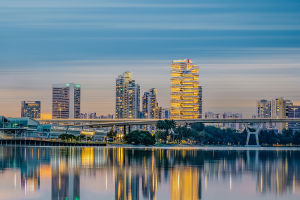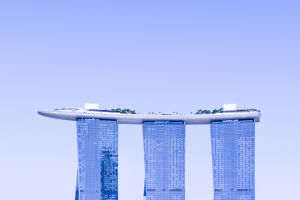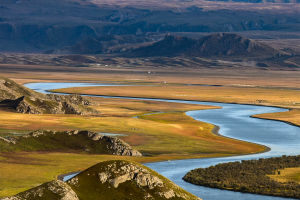With significant progress in science and technology and the rapid development of social productivity, the pace of human civilization's growth has accelerated, leading to an increase in population and expansion of cities.
This expansion has led to more energy-consuming buildings and a deteriorating living environment.
Fortunately, the concept of "green ecological housing" is gradually being accepted by everyone, and it is imperative to reduce energy consumption, reduce environmental pollution and achieve sustainable development for humans and the built environment.
While Environment-friendly buildings and Eco-buildings have similarities, each has its subtle differences.
An environmentally friendly building maximizes resource conservation (energy, land, water, and materials), protects the environment, and reduces pollution throughout the building's life cycle, providing a healthy, suitable, and efficient space for people to use while keeping in harmony with nature. To achieve this goal, environmental protection buildings must consider the following details:
The building's surroundings should include clean air, water, and soil, ensuring it is not endangered by adverse natural environments or vulnerable to natural disasters.
Minimizing energy and resource consumption by utilizing solar energy and creating good natural lighting systems.
Recycling and reusing resources, such as actively using other industrial and agricultural waste materials.
Creating and maintaining green spaces and planting trees around buildings to improve the landscape, maintain ecological balance, and achieve wind and shade protection.
Focusing on indoor air quality.
Actively protecting valuable ancient cultural or architectural sites near buildings.
Ensuring the building's cost and operation and management are economical and reasonable, and the use of advanced technology can result in low running costs and potential savings in building costs.
The concept of ecological architecture is based on the local natural ecological environment, utilizing the basic principles of building technology science, and modern scientific and technological means to arrange the relationship between the building and other related factors.
The goal is to create a combination of a zoo page machine between the building and the environment while having good indoor climate conditions and strong bioclimatic adjustment capacity to meet people's living environment's needs.
The result is a virtuous cycle formed between people, buildings, and the natural ecological environment.
Eco-architecture focuses on the relationship between people, buildings, and nature to create a comfortable space for people with healthy temperature, humidity, clean air, good light, a sound environment, flexible, and open space with long-lasting effects.
It also protects the surrounding environment, minimizing the demands on the natural world and lessening the negative impacts on it.
To design environmentally friendly and ecological buildings, architects should focus on reducing the negative impact on nature and creating a sustainable environment for people.
This goal can be achieved by incorporating green technologies and practices to conserve resources and minimize waste while improving the building's energy efficiency and indoor air quality.
Additionally, architects should ensure the building's cost and operation, and management is economical and reasonable while utilizing advanced technology to reduce running costs and potential savings in building costs.
The development of environmentally friendly and ecological buildings is crucial to reduce energy consumption, protect the environment, and achieving sustainable development for humans and the built environment.
To achieve this goal, architects and builders must consider the building's surroundings, minimize energy and resource consumption, recycle and reuse resources, create and maintain green spaces, focus on indoor air quality, and protect valuable cultural or architectural sites near buildings.
With proper planning and execution, buildings can become a combination of a zoo page machine, creating a virtuous cycle between people, buildings, and the natural ecological environment.


